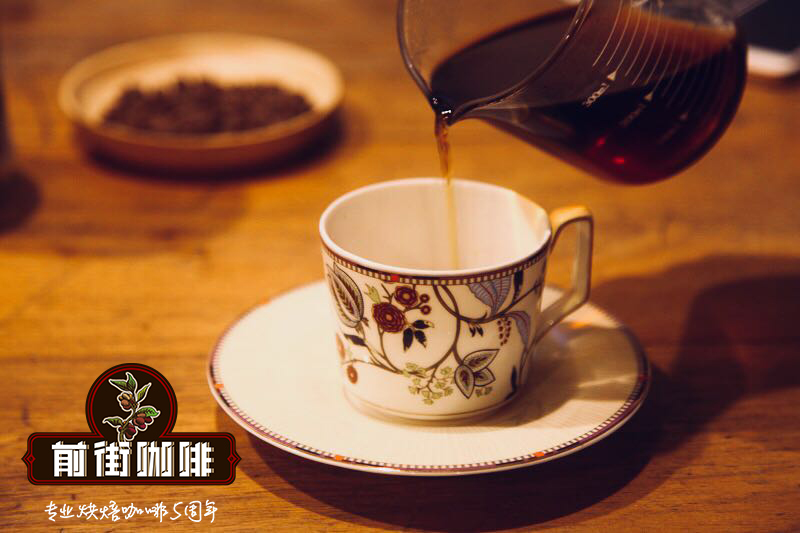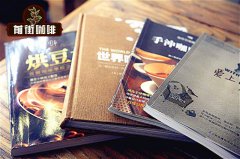History of coffee taste: Britain once thought that coffee came from an exotic fart.

Professional coffee knowledge exchange more coffee bean information please follow the coffee workshop (Wechat official account cafe_style)
In 1650, the first coffee shop in England officially opened in Oxford, and in 1652, the second coffee shop in England appeared in London. After 1660, coffee was very popular among the people, and the government began to tax coffee, but people's enthusiasm for coffee remained unabated. Although some people think that drinking coffee will lead to infertility, coffee shops still open one after another. In May 1663, there were at least 82 coffee houses in London, and by 1770 there were at least a thousand.
These cafes only serve men, so they are all men except the waitresses. As long as you are male, you can go to the coffee shop regardless of status or class, of course, if you can afford it.
Drinking coffee at home is a strange behavior.
London's Lloyd's Cafe and Garraway's Cafe are mainly service providers. St. James Cafe (St James's Coffee House) and Cocoa Tree Cafe (Cocoa Tree) are places where politicians gather. ── if you are a Whig, go to St. James Cafe and members of the Tories go to the latter. If you want to discuss religion, you'd better go to the coffee shop near St. Paul's Cathedral, because these issues cannot be discussed in other cafes. If you love literature, then Will's Coffee House in Covent Garden is the first choice, where John Dryden often publishes his opinions on the latest books or plays and becomes the focus of attention.
Most coffee shops have only one room with a few tables and chairs for guests to use, while others have more spacious indoor space. For example, when you come to Bristow and walk into the Great Southern Cafe (Great Lower Coffee Room) run by John Kimber, you can see three tables surrounded by seats, benches, benches, clocks, a stack of coffee cups, trays and glasses on the counter, and a stove inside. The floor is made of planks, and the smell of coffee and tobacco is in the air. The second coffee room is located on the second floor, with more or less the same internal furnishings as the first floor, except that there are luxurious home furnishings such as sofas, mirrors and curtains.
Just like some taverns, some cafe owners use historical relics to attract customers, some of which are hilarious. In a coffee shop in London, for example, it has a "hat of the sister of Mrs. Pontius Pilate's maid" as a gimmick to attract customers.
As long as you pay a penny for admission, you can stay as long as you want, and you can drink hot black coffee brewed in large urns while smoking a pipe filled with black tobacco provided by the coffee shop. While drinking coffee, you can also read the weekly newspaper and newsletter selected by the store, or chat with the club's partners and talk about matters of mutual concern. During this period, a "club" means a group of friends who meet regularly and share the cost of coffee equally with each other in the form of an informal agreement.
You can buy your own coffee or make it at home. The price of coffee rose after the government raised the consumption tax after three shillings a pound before 1689. By the 1690s, the price per pound was six shillings. If you want to drink coffee at home, you need to buy coffee pots and porcelain cups. The average price of a coffee pot is about sixpence, but porcelain cups imported from China cost one shilling and sixpence each.
But coffee is still a relatively social drink that only appears in public, and it would be quite odd for someone to hide at home and drink coffee in the 17th century. It's reasonable to drink at home, but not coffee. But wherever you drink coffee, there are people who are full of opinions about coffee. The author of "A Satyr against Coffee" mentioned:
"the old, broken leather is burned and mashed into powder, and the smell is the smell of coffee: it smells like old shoes. Like the smell of a horse cleaning pool, like the juice extracted by a witch from a dead man's bones. Fart smell from an exotic country. "
Important Notice :
前街咖啡 FrontStreet Coffee has moved to new addredd:
FrontStreet Coffee Address: 315,Donghua East Road,GuangZhou
Tel:020 38364473
- Prev

How to quickly identify the freshness of coffee beans? What is the effect of defective beans on coffee?
The secret of judging the freshness of coffee beans: fresh coffee beans smell strong, otherwise tasteless or bad smell. Look at it: good coffee beans are complete in shape and full in size. On the contrary, the shape is incomplete. Hand pressure: fresh coffee beans are fresh and crisp, and the fragrance comes out when they crack. Color: dark black coffee beans, the brewed coffee has a bitter taste; yellow coffee
- Next

Coffee and Science: exploring the Origin and Coffee Flavor from a Chemical Perspective
Professional coffee knowledge exchange more coffee bean information please follow the coffee workshop (Wechat official account cafe_style) where is your favorite coffee producing area? Brazil, Kenya, Ethiopia? Why do you care which country the coffee comes from? There is probably an important reason because the same variety of coffee has different chemicals according to where it grows.
Related
- How did the Salvadoran coffee industry develop in Central America?
- What exactly does the golden cup extraction of coffee mean?
- The Origin of Coffee flower
- [2023 Starbucks World Earth Day] there are more meaningful things besides free Starbucks coffee!
- What kind of coffee is there in Spain? 9 Flavors of Spanish Coffee
- Aromatic African coffee| Kenya's coffee culture and historical production area
- Liberica Coffee Bean knowledge: the characteristics of Liberian Coffee beans of the three original species of Coffee beans
- The origin and formula of Spanish latte introduces the taste characteristics of Bombon coffee in Valencia, Spain.
- How to adjust the solution of over-extracted coffee
- What is the tasting period of coffee beans? What is the period of coffee and beans? How should coffee wake up and raise beans?

